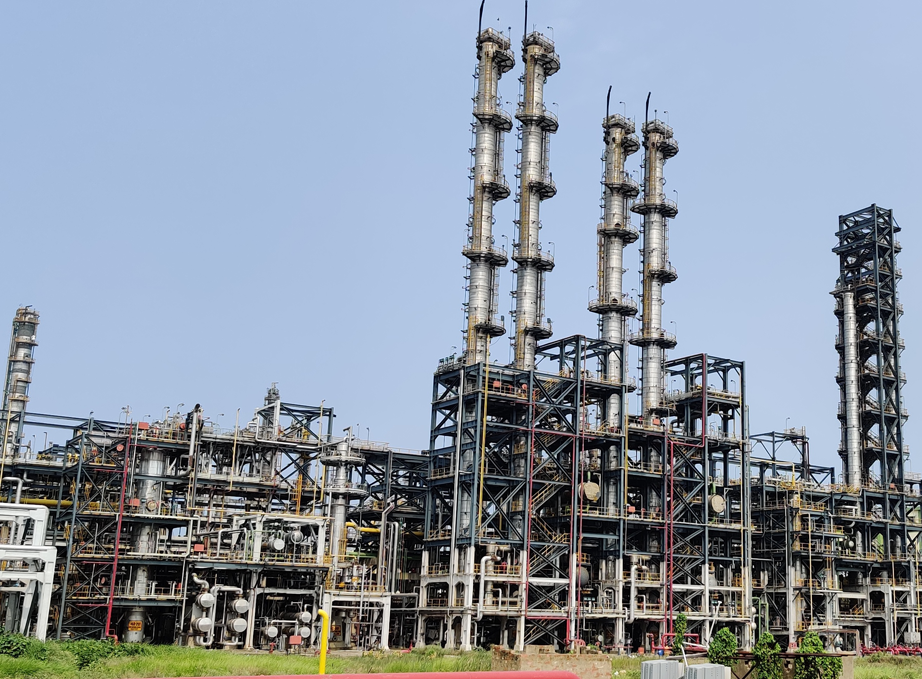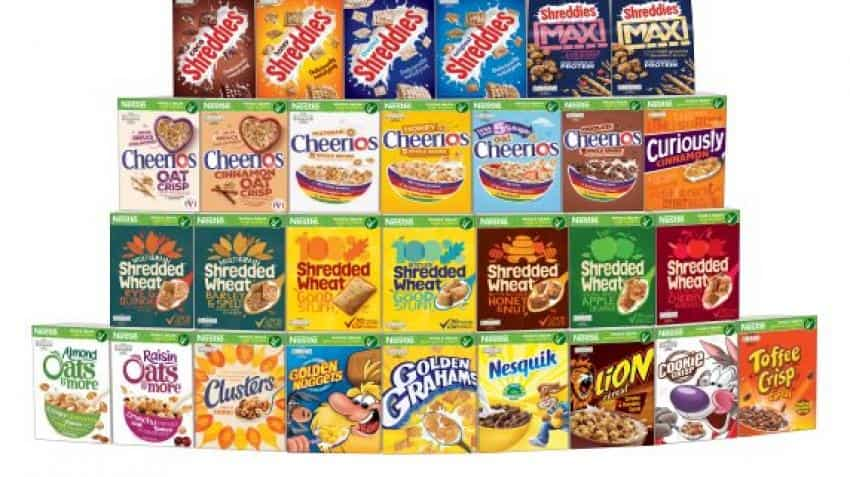According to TechSci Research report, “India C4 Raffinate Market – By Region, Competition, Forecast and Opportunities, 2019-2029”, the India C4 Raffinate Market achieved a total market volume of 402.83 thousand Metric Tonnes in 2023 and is poised for strong growth in the forecast period, with a projected Compound Annual Growth Rate (CAGR) of 3.04% through 2029. The Indian C4 Raffinate market, a crucial segment within the country’s petrochemical and chemical industries, has witnessed notable technological advancements in recent years. C4 Raffinate, a mixture of butene and butane, is an important intermediate in the production of various chemicals, including butadiene, which serves as a key component in the manufacture of synthetic rubber. These technological advancements have not only contributed to the growth of the C4 Raffinate market but have also improved production processes, environmental sustainability, safety standards, and product quality.
One of the most significant technological advancements in the Indian C4 Raffinate market is the development of advanced production processes. Traditional methods of C4 Raffinate production were resource-intensive and had limitations in terms of production efficiency. However, newer technologies, such as improved catalytic processes and more efficient separation techniques, have gained prominence. These methods reduce resource consumption, minimize waste generation, and enhance overall production efficiency, leading to cost savings and a reduced environmental footprint.
Browse over XX market data Figures spread through XX Pages and an in-depth TOC on “India C4 Raffinate Market.” – https://www.techsciresearch.com/report/india-c4-raffinate-market/22480.html
Automation and digitalization have played a pivotal role in optimizing C4 Raffinate production processes, ensuring product consistency and enhancing safety standards within the industry. Automation systems have been integrated into various stages of C4 Raffinate production, from raw material handling to distillation and quality control. This reduces the potential for human error, enhances precision, and improves overall production efficiency. Real-time monitoring and data analytics enable predictive maintenance, allowing companies to detect and address potential issues before they lead to costly downtime.
Environmental sustainability is a core focus within the Indian C4 Raffinate market, and technological advancements have been instrumental in reducing the industry’s environmental impact. Initiatives to minimize waste and emissions through advanced waste treatment processes and the adoption of cleaner energy sources have been integral. The responsible management of hazardous materials and the implementation of state-of-the-art safety systems have further reduced the risk of accidents and environmental contamination, aligning the industry with global standards for responsible chemical manufacturing.
Safety standards within the Indian C4 Raffinate market have significantly improved with the integration of advanced technologies and practices. The handling of hazardous materials and the management of potential risks associated with C4 Raffinate production have benefited from the introduction of state-of-the-art safety protocols, emergency shut-off mechanisms, and hazard monitoring systems. This has resulted in a safer work environment, protecting both workers and the surrounding community.
Quality control and assurance have seen substantial enhancements through technological means. The use of sophisticated analytical instruments and testing methods allows for precise monitoring of C4 Raffinate properties and product quality. This is vital for industries that rely on C4 Raffinate as a crucial raw material for their products, ensuring consistent and high-quality output.

Supply chain management within the Indian C4 Raffinate market has also benefited from technological innovation. Modern supply chain management software and logistics technology have improved inventory control, reduced lead times, and enhanced transportation efficiency. This results in cost savings and improved reliability in the supply chain, benefiting both manufacturers and consumers.
Government support and incentives for research and development have promoted innovation within the C4 Raffinate sector. Public-private partnerships and collaborations with research institutions have driven the development of new technologies and sustainable practices, contributing to the industry’s growth and competitiveness.
In conclusion, the Indian C4 Raffinate market has seen significant technological advancements that have improved production efficiency, environmental sustainability, safety, and product quality. These innovations have not only strengthened the industry’s competitiveness but have also aligned it with global standards for responsible and sustainable petrochemical manufacturing. As the demand for C4 Raffinate continues to grow, India’s commitment to technological innovation positions it as a key player in the global chemical and petrochemical market, emphasizing environmental responsibility, safety, and efficiency as essential components of its continued growth and excellence in the C4 Raffinate industry.
The India C4 Raffinate Market is segmented into type, application, regional distribution, and company.
Based on the type, the C4 Raffinate I segment emerged as the dominant player in the Indian market for C4 Raffinate in 2023, primarily due to the critical role that C4 Raffinate I plays as a versatile feedstock and raw material in the production of various chemicals and petrochemicals.
C4 Raffinate I, also known as isobutylene, is used in the production of a wide range of chemicals, including isooctane, methyl tertiary-butyl ether (MTBE), poly butanes, and various polymer intermediates. These chemicals find applications in industries such as automotive, petrochemicals, and plastics.
The Indian market has witnessed substantial growth in industries that rely on C4 Raffinate I as a feedstock. The demand for high-quality chemicals and petrochemicals has driven the prominence of the C4 Raffinate I segment in the market.
The dominance of the C4 Raffinate I segment is further emphasized by its versatility and adaptability in the manufacturing of diverse chemical products. Its role as a critical raw material in the production of these chemicals has made it indispensable for manufacturers.
As India’s chemical and petrochemical sectors continue to grow and diversify, the demand for C4 Raffinate I is expected to persist, ensuring the continued dominance of this segment in the market.
Based on the region, the West region has indeed emerged as the dominant player, marking its significance in the production and distribution of this essential chemical compound. This regional dominance can be attributed to several key factors, including well-established industrial infrastructure, access to critical resources, and strategic advantages.
The West region of India, particularly the states of Gujarat and Maharashtra, is home to a significant portion of the country’s chemical and petrochemical manufacturing facilities. This region boasts industrial clusters, chemical parks, and specialized zones dedicated to the chemical and petrochemical industries, which have been instrumental in the production and distribution of C4 Raffinate.
The West region’s strategic geographical location near major ports and petrochemical complexes along the western coastline provides efficient access to the import of crucial raw materials, such as naphtha, which is a key feedstock for C4 Raffinate production. This logistical advantage ensures a consistent supply chain for manufacturers in the region.
The presence of a skilled workforce, a business-friendly environment, and a well-developed transportation infrastructure in the West region has further contributed to its dominance in the C4 Raffinate market.
As India’s chemical and petrochemical sectors continue to grow and evolve, the West region’s robust capabilities and strategic advantages make it a key contributor to the country’s industrial development and the C4 Raffinate market.
Major companies operating in India C4 Raffinate Market are:
- Indian Oil Corporation Limited (IOCL)
- Bharat Petroleum Corporation Limited (BPCL)
- Hindustan Petroleum Corporation Limited (HPCL)
- Reliance Industries Limited
- National Organic Chemical Industries Limited (NOCIL)
Download Free Sample Report – https://www.techsciresearch.com/sample-report.aspx?cid=22480
Customers can also request for 10% free customization on this report.
“The Indian C4 Raffinate market is a crucial segment within the country’s petrochemical and chemical industries. C4 Raffinate, a mixture of butene and butane, is a vital intermediate in the production of various chemicals, including butadiene, which is essential for manufacturing synthetic rubber. This positions C4 Raffinate as a fundamental component in the chemical and petrochemical landscape of India.
Domestic production of C4 Raffinate in India has seen consistent growth, reducing the dependence on imports and enhancing self-sufficiency in this essential chemical. Several major petrochemical manufacturers have invested in expanding their production capacities, further strengthening India’s position in the C4 Raffinate market.
The Indian C4 Raffinate market exhibits a competitive landscape, with well-established conglomerates and specialized companies operating within the sector. This diversity fosters innovation, cost-effective solutions, and competitive pricing, ultimately benefiting industries that rely on C4 Raffinate as a crucial raw material for their products.
However, the sector faces challenges related to environmental sustainability and adherence to safety standards, given the nature of C4 Raffinate production. Ensuring strict compliance with safety protocols and environmental standards is essential for responsible and sustainable growth in the Indian C4 Raffinate market, safeguarding the well-being of workers and minimizing any adverse environmental impacts. Responsible management and the integration of advanced technologies are vital for the continued growth and sustainability of the petrochemical manufacturing industry in India. As C4 Raffinate remains a critical component in various industrial applications, India’s commitment to innovation and responsibility positions it as a key player in the global chemical and petrochemical market, emphasizing environmental sustainability, safety, and efficiency as integral elements of its growth and success in the C4 Raffinate industry.,” said Mr. Karan Chechi, Research Director with TechSci Research, a research-based management consulting firm.
“India C4 Raffinate Market By Type (C4 Raffinate I, C4 Raffinate II), By Application (MTBE, SBA, MEK, and Others), By Region, Competition, Forecast and Opportunities, 2019-2029”, has evaluated the future growth potential of India C4 Raffinate Market and provides statistics & information on market size, structure and future market growth. The report intends to provide cutting-edge market intelligence and help decision makers take sound investment decisions. Besides, the report also identifies and analyzes the emerging trends along with essential drivers, challenges, and opportunities in India C4 Raffinate Market.
Download Free Sample Report – https://www.techsciresearch.com/sample-report.aspx?cid=22480
Contact Us-
TechSci Research LLC
420 Lexington Avenue, Suite 300,
New York, United States- 10170
M: +13322586602
Email: sales@techsciresearch.com
Website: www.techsciresearch.com






